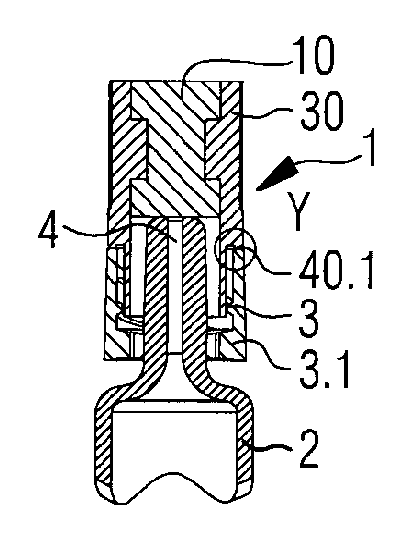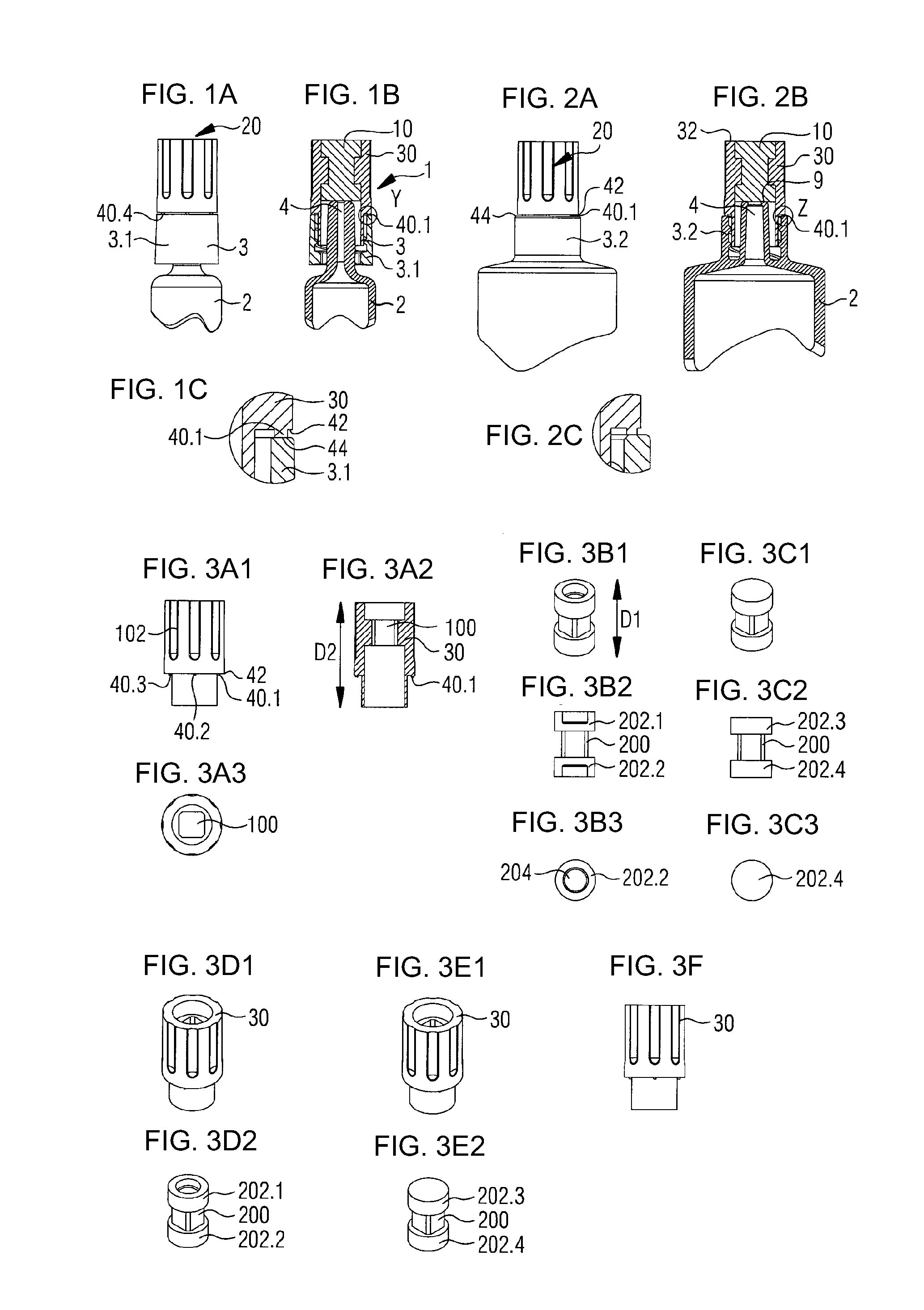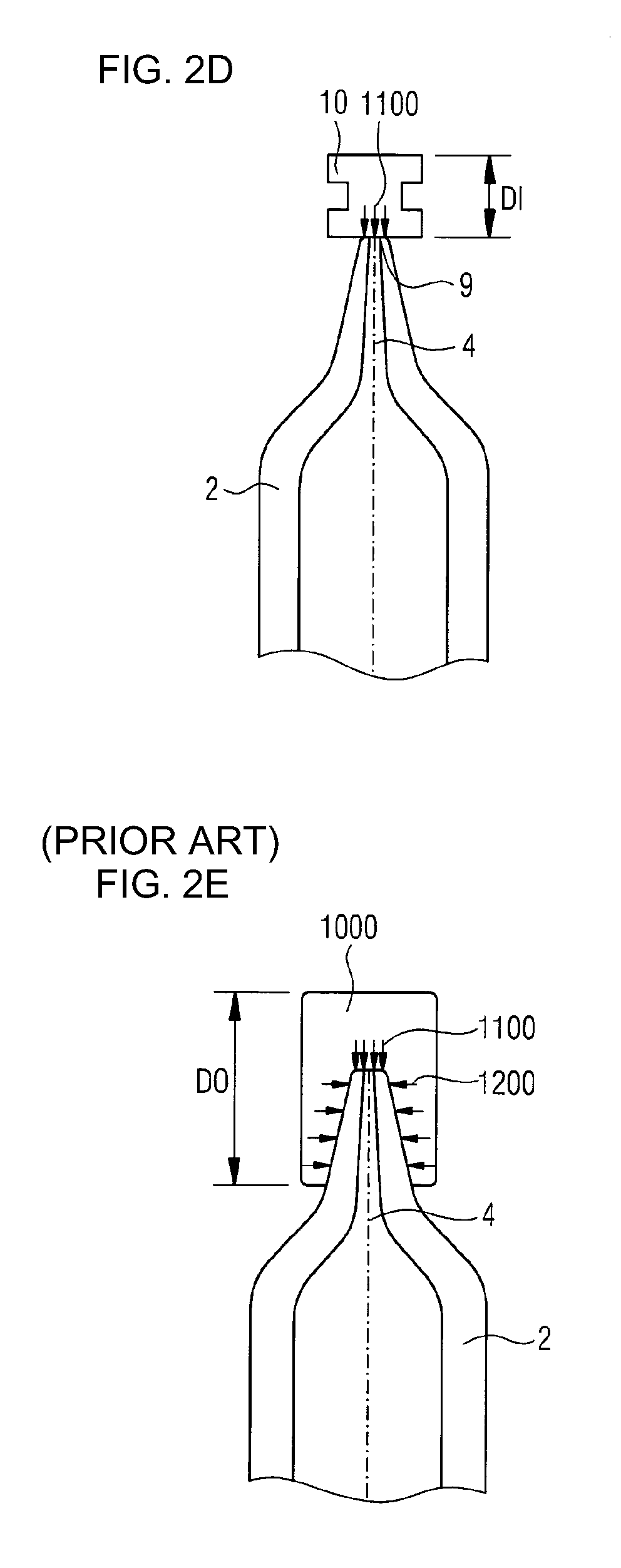Closure element, in particular a syringe closure element for closing a distal opening of a syringe body in a sealing manner
a technology of syringe body and closure element, which is applied in the field of syringe closure element, can solve the problems of high patient infection risk, incorrect treatment of patients, and use in certain fields of applications, and achieve the effect of reducing the torque when unscrewing the closure cap, reducing the expenditure of force, and achieving rotational security
- Summary
- Abstract
- Description
- Claims
- Application Information
AI Technical Summary
Benefits of technology
Problems solved by technology
Method used
Image
Examples
Embodiment Construction
[0072]An embodiment of a complete syringe closure element 1 according to the invention is illustrated in FIG. 1A-2C, 4A-5C, 7A-8C. FIGS. 1A-1C, FIGS. 4A-4C, FIGS. 7A-7C illustrate hereby one embodiment of the present invention, wherein syringe body 2 is a glass syringe and fastening element 3 is a separate component, a so-called Luer-Lock-adapter 3.1. FIGS. 2A-2C, FIGS. 5A-5C, and FIGS. 8A-8C illustrate one embodiment of the invention, wherein syringe body 2 is a plastic syringe and fastening element 3, the so-called Luer-Lock 3.2 or, respectively, Luer-Lock collar is part of syringe body 2. Complete syringe closure element 1 comprises a syringe body 2 with a distal opening 4. On distal opening 4, elastomer part 10 of closure cap 20 is placed, which can comprise an elastomer that is approved for pharmaceutical use. Distal opening 4 of syringe body 2 is hereby closed and sealed. In contrast to the prior art, elastomer part 10 encloses the distal opening 4 or, respectively, the syring...
PUM
 Login to View More
Login to View More Abstract
Description
Claims
Application Information
 Login to View More
Login to View More - R&D
- Intellectual Property
- Life Sciences
- Materials
- Tech Scout
- Unparalleled Data Quality
- Higher Quality Content
- 60% Fewer Hallucinations
Browse by: Latest US Patents, China's latest patents, Technical Efficacy Thesaurus, Application Domain, Technology Topic, Popular Technical Reports.
© 2025 PatSnap. All rights reserved.Legal|Privacy policy|Modern Slavery Act Transparency Statement|Sitemap|About US| Contact US: help@patsnap.com



